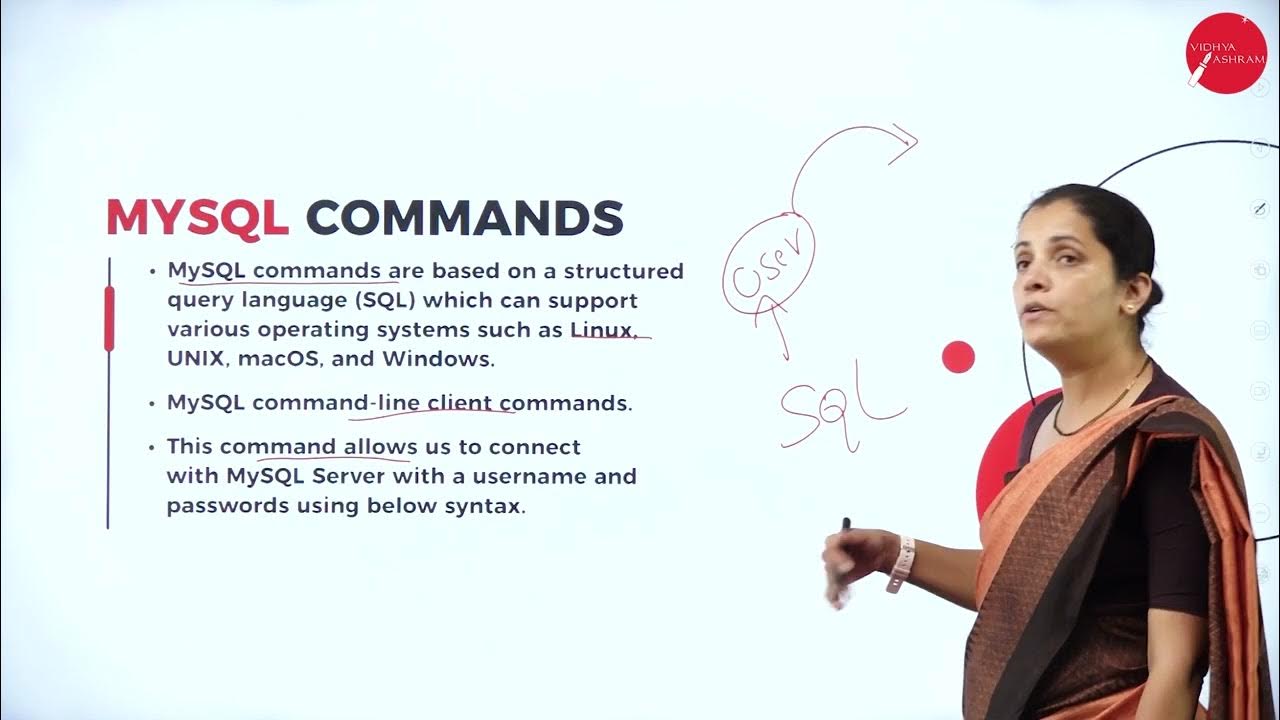Introduction to the concept of Data and Database Management System
Summary
TLDRThis educational video script delves into the concept of data, its transformation into information, and the critical role of databases. It explains data collection methods, the importance of data integrity, and how data can be leveraged for decision-making, planning, and control. The script also introduces the hierarchy of data, from fields to records and files, and touches on database management systems, emphasizing the significance of primary keys and data types. It sets the stage for further discussions on big data and related topics, highlighting the pervasive impact of data in our daily activities and the efficiency of computing in managing it.
Takeaways
- 📄 Data encompasses facts about any entity, including voice, image, audio, video, text, and numbers.
- 🔍 Data is initially collected in a raw form and requires processing to become useful information.
- 🗂️ Activities like sorting, rearranging, and counting can transform raw data into meaningful information.
- 💾 A database is a structured collection of related data, facilitating easy access, categorization, and retrieval.
- 🛠️ Database Management Systems (DBMS) are software applications that enable the management of databases, including creation, modification, and deletion of data.
- 📊 Data collection can be primary, where data is collected directly from sources, or secondary, where existing data is utilized.
- 🔑 Data integrity is crucial for ensuring the quality of insights derived from data; inaccurate data leads to inaccurate outcomes (GIGO).
- 📈 Valuable information aids in decision-making, planning, control, competitive advantage, and prediction based on accurate data.
- 🔑 Each record in a database table has a unique identifier, known as the primary key, which distinguishes it from others.
- 📑 Files are collections of related records, and databases allow for various operations such as adding, deleting, sorting, and searching records.
Q & A
What is data according to the script?
-Data is defined as facts about an object, process, people, system, or any entity. It can include voice, image, audio, video, text, numbers, and even spaces.
In what form is data typically collected?
-Data is usually collected in its raw form, which means it is in its most natural and unprocessed state.
What are some examples of activities performed on data to transform it into information?
-Activities such as sorting, rearranging, and counting are performed on data to transform it into information. For instance, sorting login data by gender and then counting the number of males and females can provide insights like the number of females that logged in on a particular day.
What is the role of a database in managing data?
-A database serves as a collection of related data that allows for easy access, categorization, retrieval, and manipulation. It is a structured system that organizes data into tables and fields, facilitating various operations like creating, modifying, deleting, sorting, and filtering records.
What is the difference between primary and secondary data collection methods?
-Primary data collection methods involve directly gathering data from sources, such as interviews, forms, questionnaires, observations, and using devices like cameras. Secondary data collection methods involve obtaining data that has already been collected by others, often from existing databases or reports.
Why is data integrity important in data management?
-Data integrity is crucial because it ensures that the data is accurate and reliable. Poor data quality can lead to incorrect insights and decisions, which can have significant consequences. The acronym GIGO (Garbage In, Garbage Out) emphasizes that the quality of output is directly dependent on the quality of input data.
How does valuable information aid in decision making and planning?
-Valuable information, derived from processed data, helps in making good decisions by accurately reflecting what is happening. It also aids in planning by providing insights into patterns and trends, which can be used to anticipate future needs and allocate resources effectively.
What is the hierarchy of data, starting from the smallest unit?
-The hierarchy of data starts from the smallest unit, which is a field (a single data item), then grows to a record (a group of related fields for one entity), and finally to a file (a collection of related records).
What is a primary key in a database, and why is it important?
-A primary key is a unique field in a database table that identifies each record uniquely. It is important because it ensures that every record can be distinctly identified, which is crucial for accurate data retrieval and manipulation.
What are some of the privileges and rights associated with database operations?
-Database operations such as adding, modifying, or deleting records are associated with privileges and rights that control who can perform these actions. These privileges are monitored to ensure accountability and maintain security and integrity of the data.
Outlines

Этот раздел доступен только подписчикам платных тарифов. Пожалуйста, перейдите на платный тариф для доступа.
Перейти на платный тарифMindmap

Этот раздел доступен только подписчикам платных тарифов. Пожалуйста, перейдите на платный тариф для доступа.
Перейти на платный тарифKeywords

Этот раздел доступен только подписчикам платных тарифов. Пожалуйста, перейдите на платный тариф для доступа.
Перейти на платный тарифHighlights

Этот раздел доступен только подписчикам платных тарифов. Пожалуйста, перейдите на платный тариф для доступа.
Перейти на платный тарифTranscripts

Этот раздел доступен только подписчикам платных тарифов. Пожалуйста, перейдите на платный тариф для доступа.
Перейти на платный тарифПосмотреть больше похожих видео

¿Qué son las BASES DE DATOS? - La mejor explicación en español

Learn What is Database | Types of Database | DBMS

Belajar Sistem Informasi | 1. Posisi SI pada Organisasi

Database Design Tips | Choosing the Best Database in a System Design Interview

Apa Itu Data, Basis Data dan DBMS

DAY 10 | PHP AND MYSQL | VI SEM | B.CA | ACCESSING MYSQL | L1
5.0 / 5 (0 votes)
